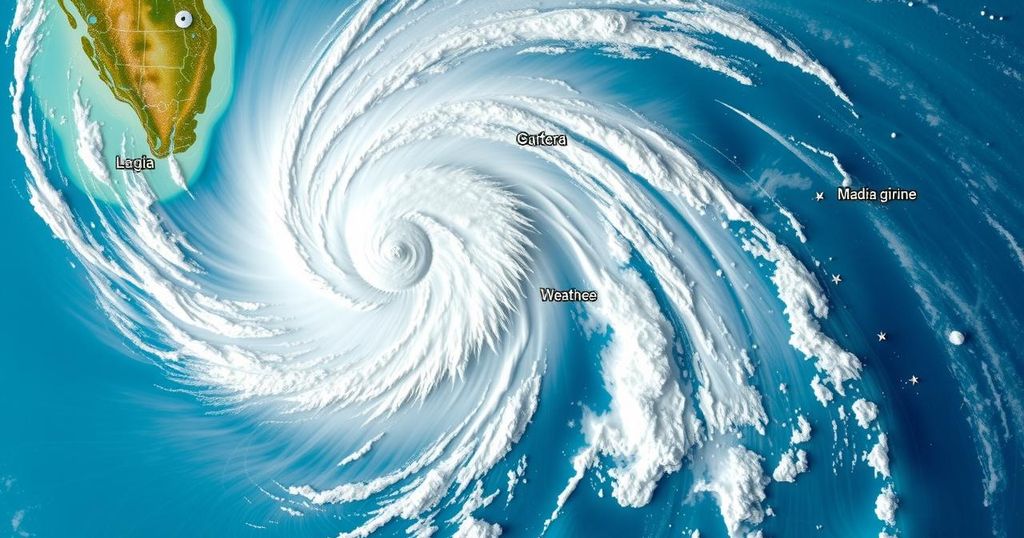Tracking Tropical Cyclone Dikeledi: Characteristics and Implications
Tropical Cyclone Dikeledi has developed in the Indian Ocean, featuring sustained wind speeds of 46 miles per hour. This cyclone typifies the unique characteristics of Southern Hemisphere storms, rotating clockwise and becoming active in a season that runs from late October to May, peaking around late February and March.
Tropical Cyclone Dikeledi emerged in the Indian Ocean late Thursday, according to the Joint Typhoon Warning Center. The cyclone is currently displaying sustained wind speeds of 46 miles per hour. In the Southern Hemisphere, where only about a quarter of the Earth’s tropical cyclones form, storms with winds exceeding 74 miles per hour are designated as cyclones instead of hurricanes. A notable distinction in the Southern Hemisphere is that cyclones rotate in a clockwise direction as opposed to the counterclockwise rotation seen in hurricanes.
Eastern Africa, particularly Madagascar, as well as the western, northern, and eastern regions of Australia and adjacent island nations, are vulnerable to cyclonic activity. The Southern Hemisphere cyclone season is counter to that of the Northern Hemisphere, typically commencing in late October and extending through May. Cyclonic activity tends to peak around late February and early March, although specific patterns may vary by region.
Understanding tropical cyclones is crucial for disaster preparedness and response, especially in regions vulnerable to severe weather. Cyclones and hurricanes, while essentially the same phenomenon, differ by name based on their geographic location. In the Southern Hemisphere, these storms present unique characteristics, including their clockwise spin due to the Coriolis effect. Awareness of their formation and trajectory can significantly aid in minimizing risks associated with such natural disasters, especially in the cyclone-prone areas of eastern Africa and Australia.
In conclusion, Tropical Cyclone Dikeledi has formed in the Indian Ocean with established wind speeds of 46 miles per hour. Cyclones in the Southern Hemisphere are distinct both in nomenclature and rotational patterns compared to hurricanes in the Northern Hemisphere. The cyclone season in this region commences later in the year, demanding ongoing vigilance in affected areas during its peak activity periods.
Original Source: www.nytimes.com




Post Comment